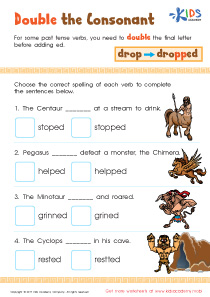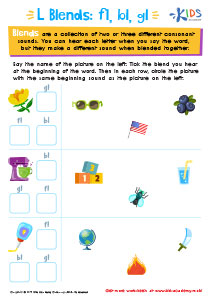Consonant Digraphs Worksheets for Ages 6-7
13 filtered results
-
From - To
Introducing our Consonant Digraphs worksheets, meticulously crafted for Ages 6-7. These engaging and interactive worksheets are designed to master the art of blending consonant digraphs, a foundational skill critical for budding readers and writers. Your child will embark on a captivating journey through activities that demystify sounds like "ch," "th," "sh," and more, making reading a breeze. Tailored specifically for young learners, these worksheets provide the perfect blend of challenge and fun, promoting confidence and proficiency in early literacy skills. Dive into our Consonant Digraphs collection today and watch your child's reading abilities flourish!
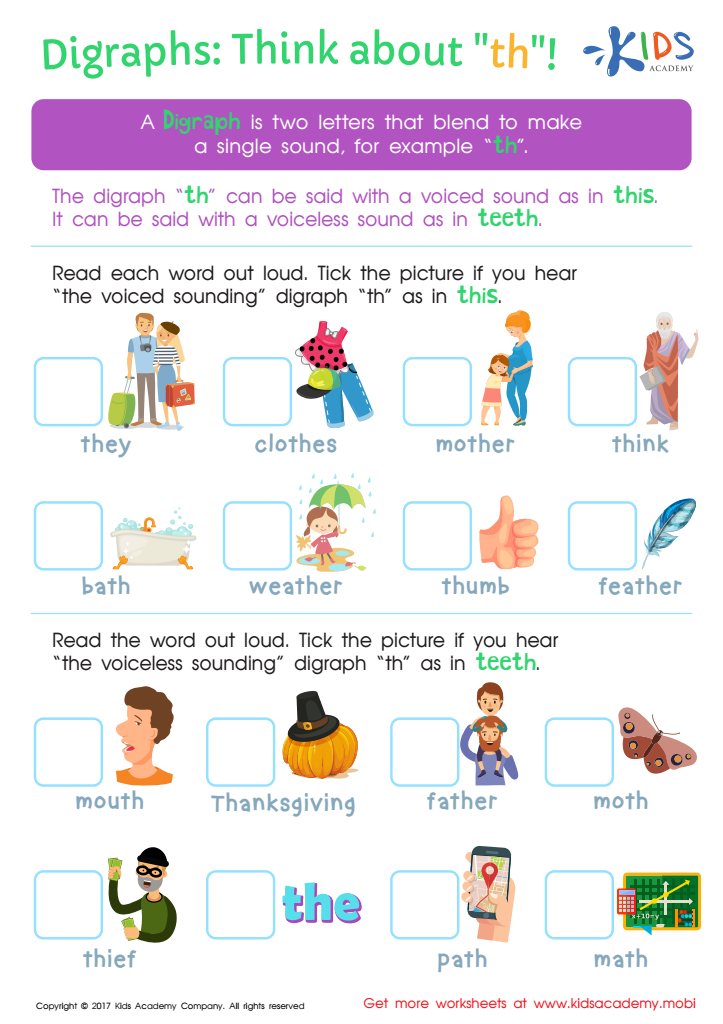

Digraphs: Think About "th" Worksheet
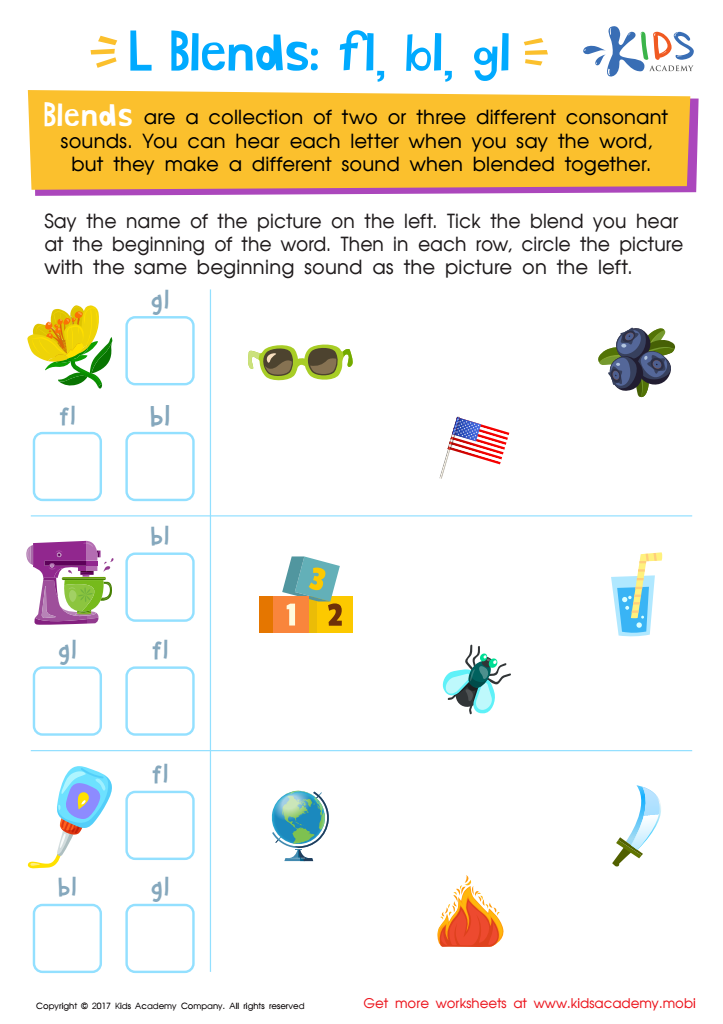

Blending Consonants: "Fl", "Bl" and "Gl" Printable
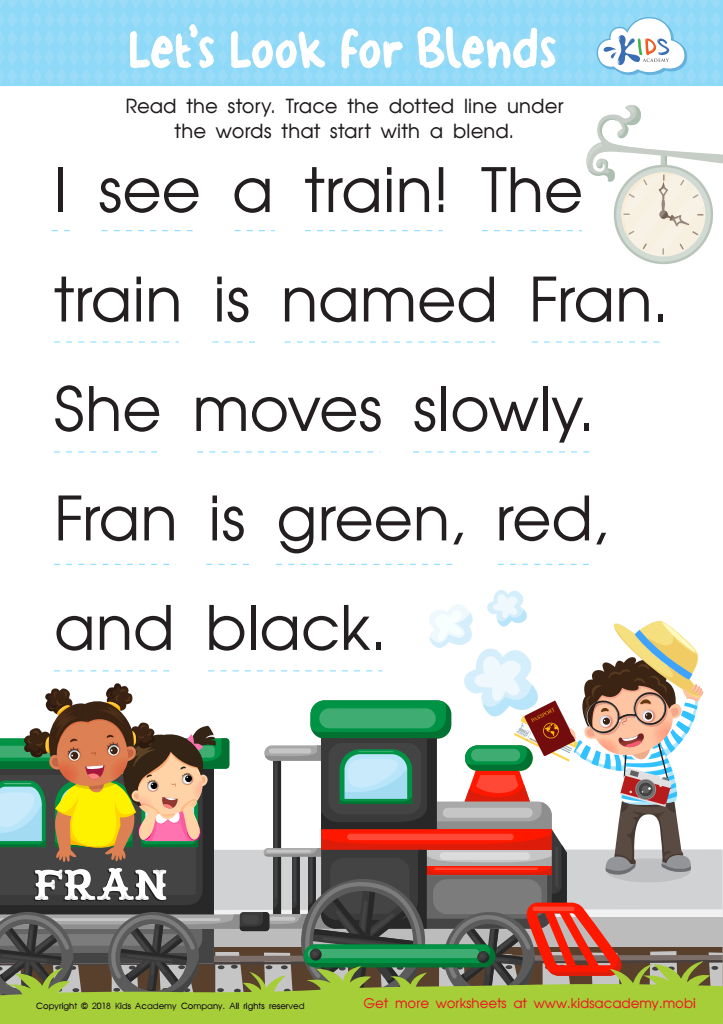

Let's Look for Blends Worksheet
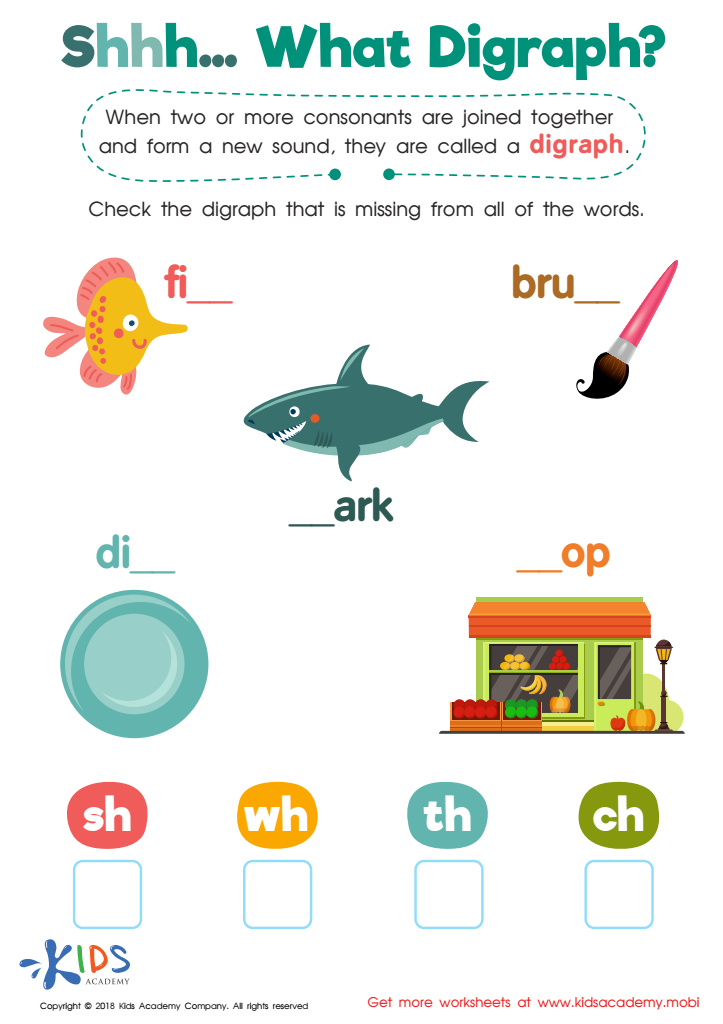

Shhh... What Digraph? Worksheet
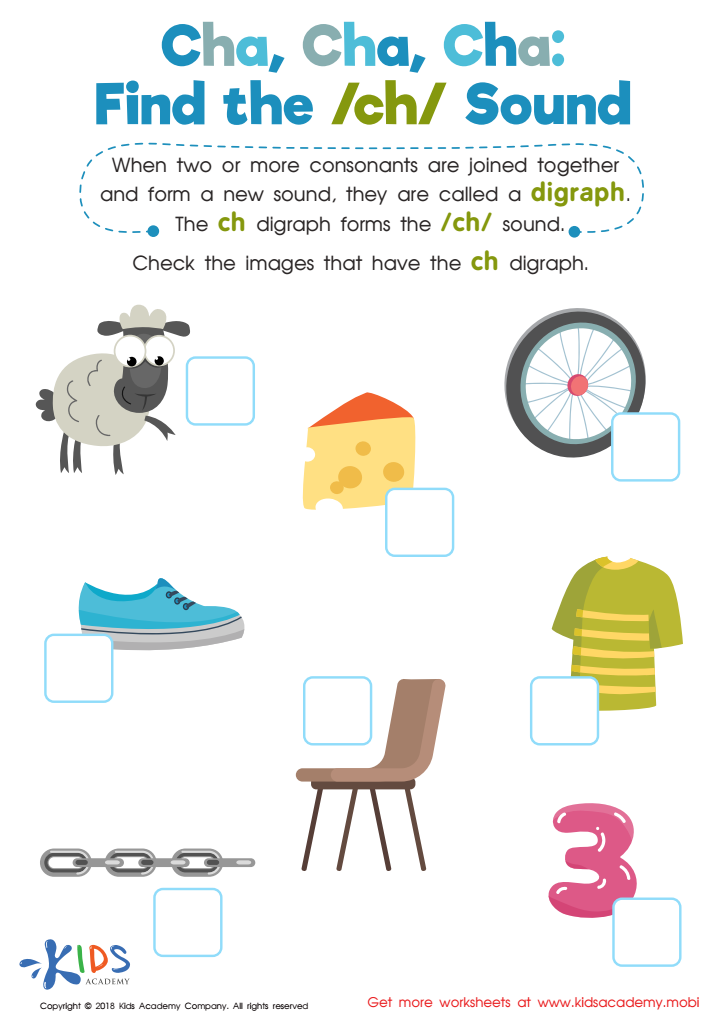

Cha, Cha, Cha: Find the /Ch/ Sound Worksheet
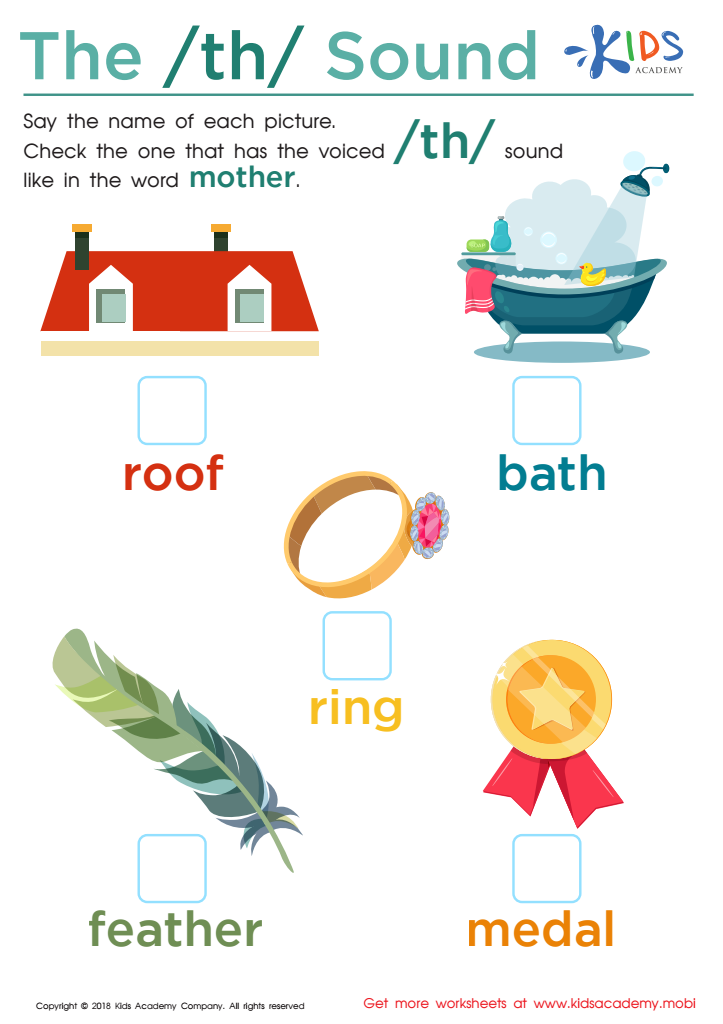

The /th/ Sound Worksheet
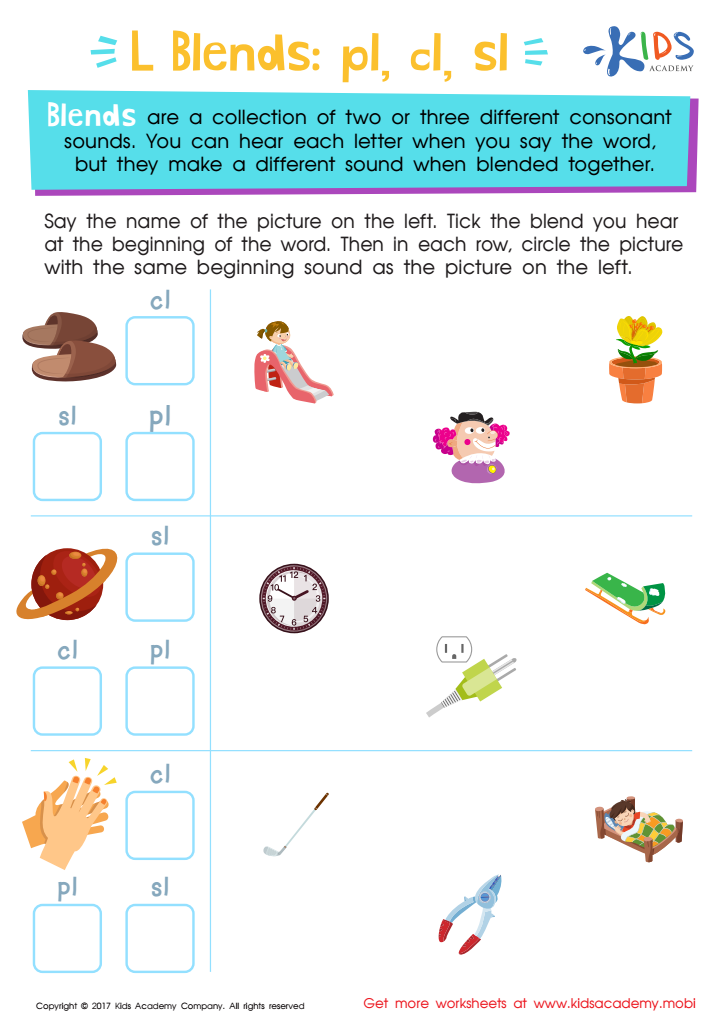

L Blends: "Pl", "Cl" and "Sl" Printable
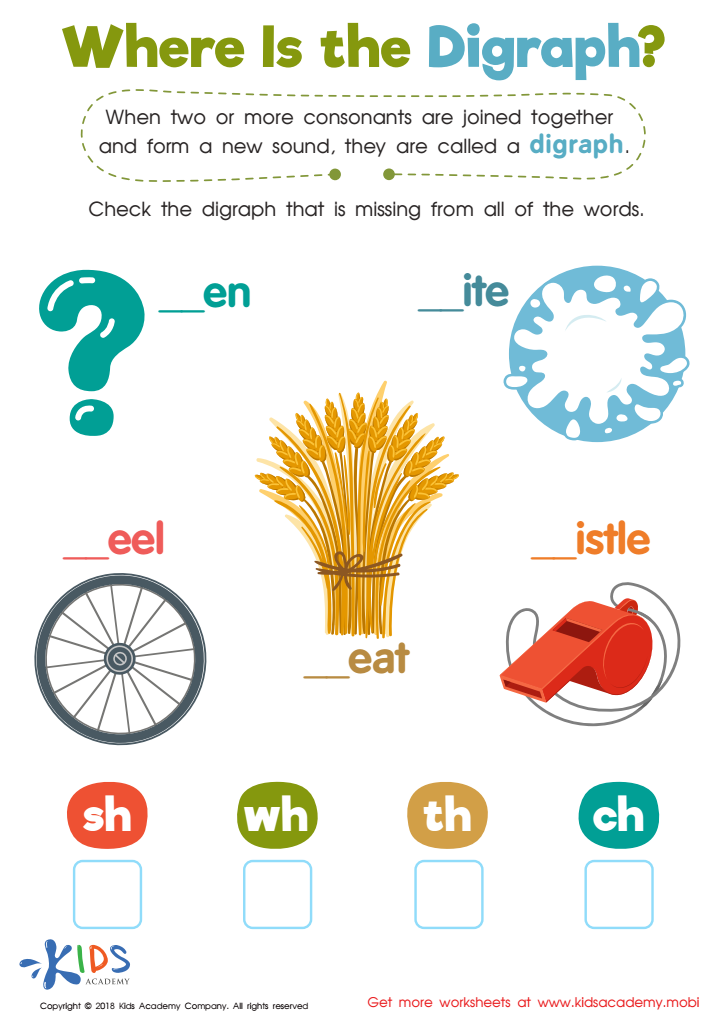

Where Is the Digraph? Worksheet
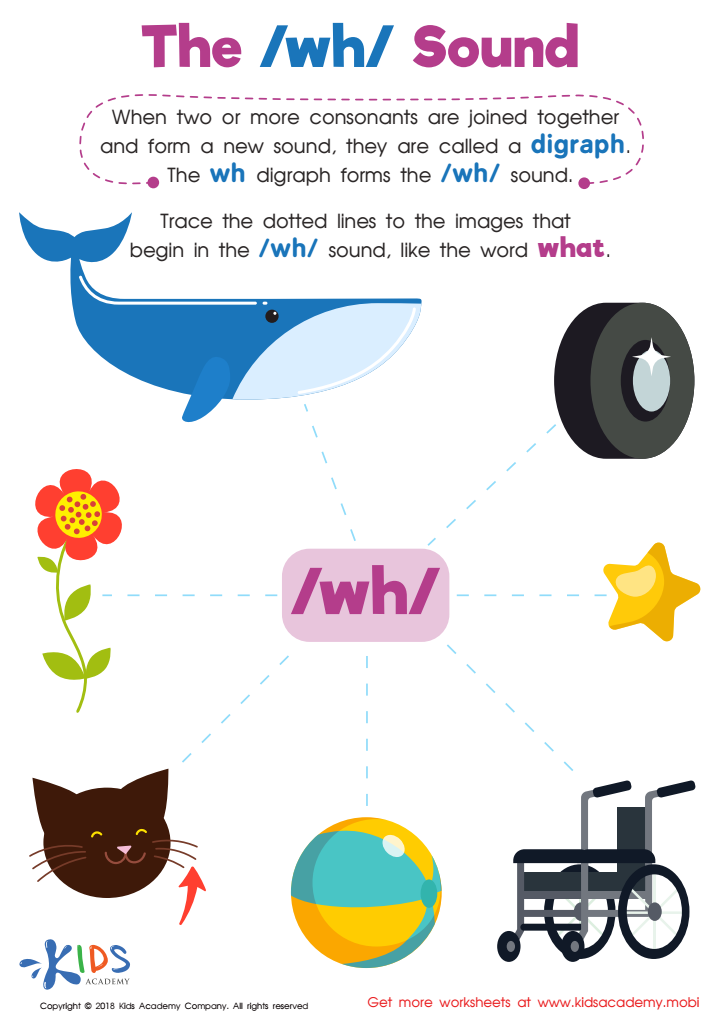

The /wh/ Sound Worksheet
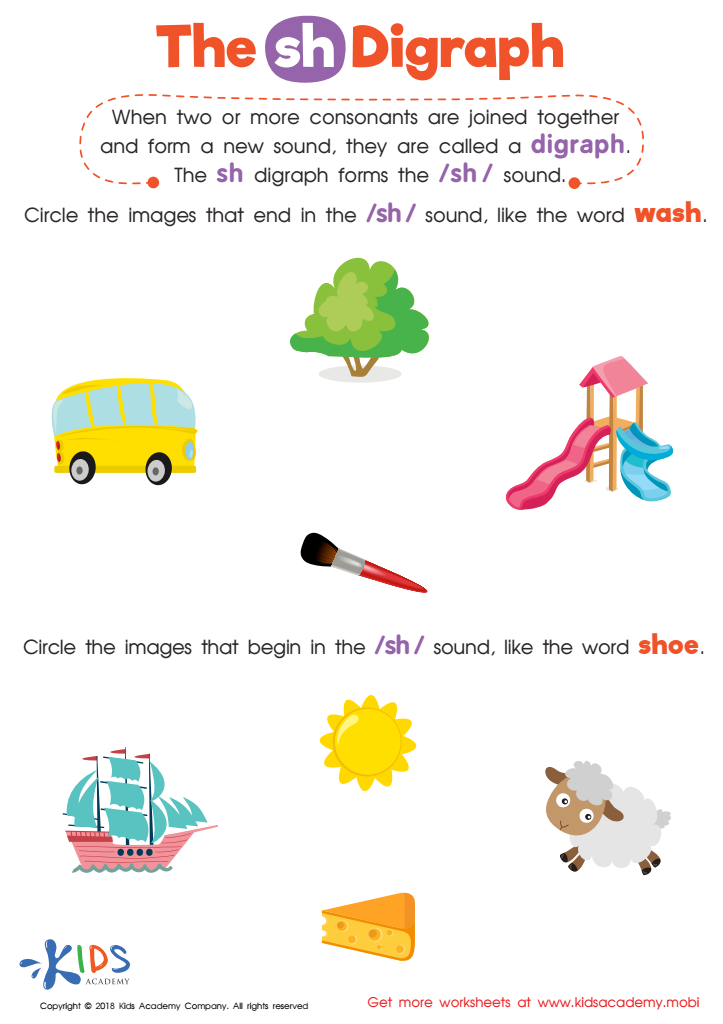

The SH Digraph Worksheet
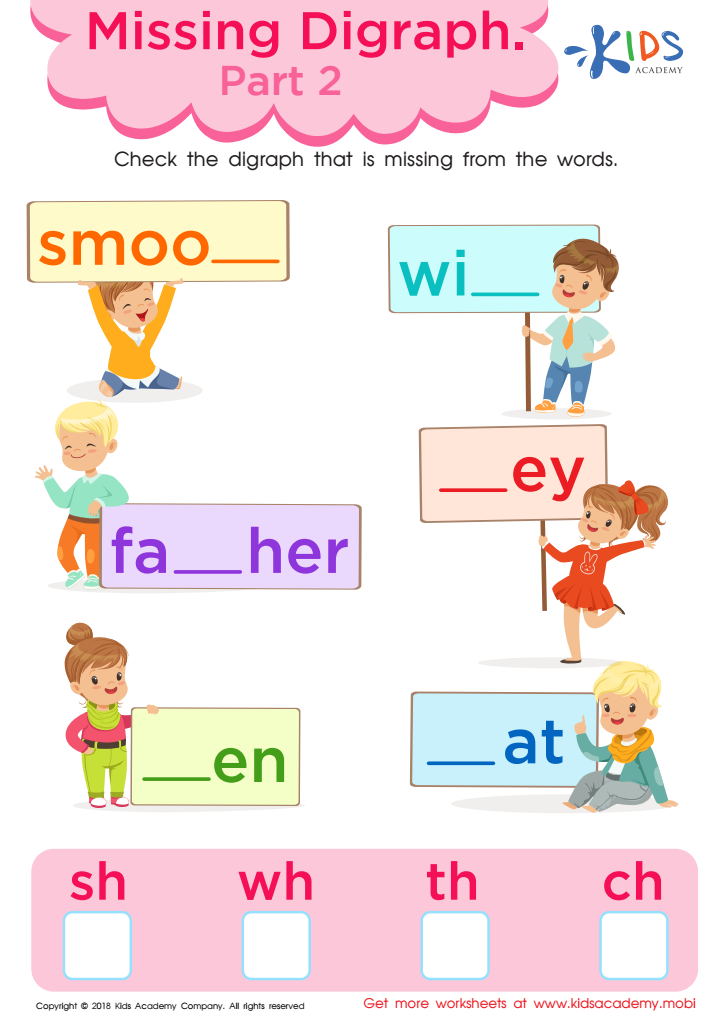

Missing Digraph: Part 2 Worksheet
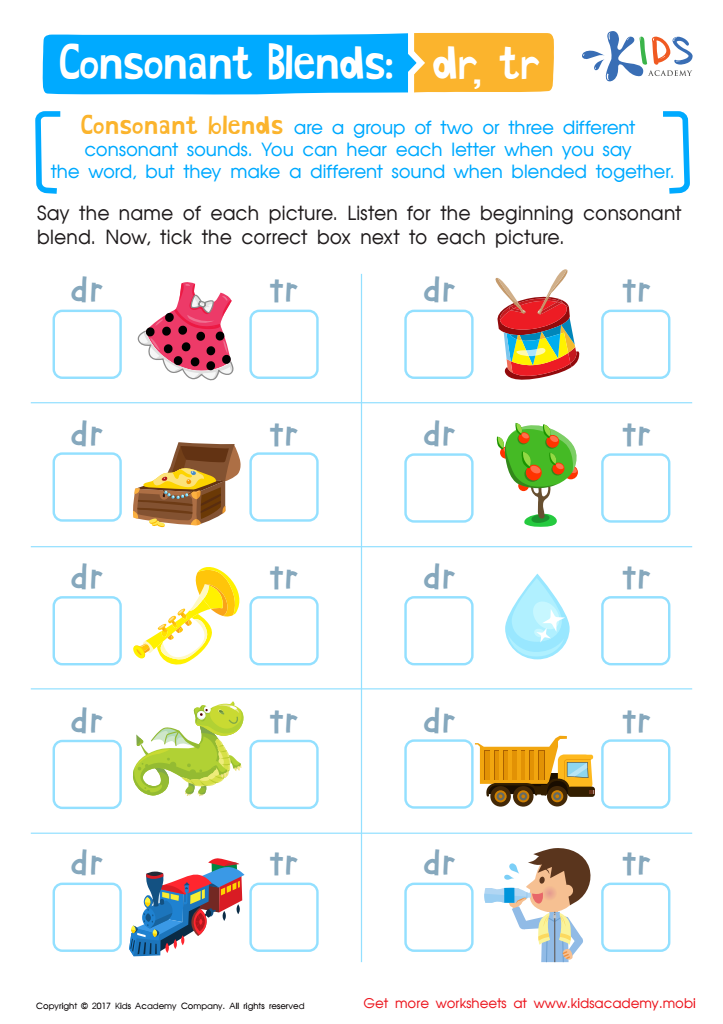

Consonant Blends: "Dr" and "Tr" Printable
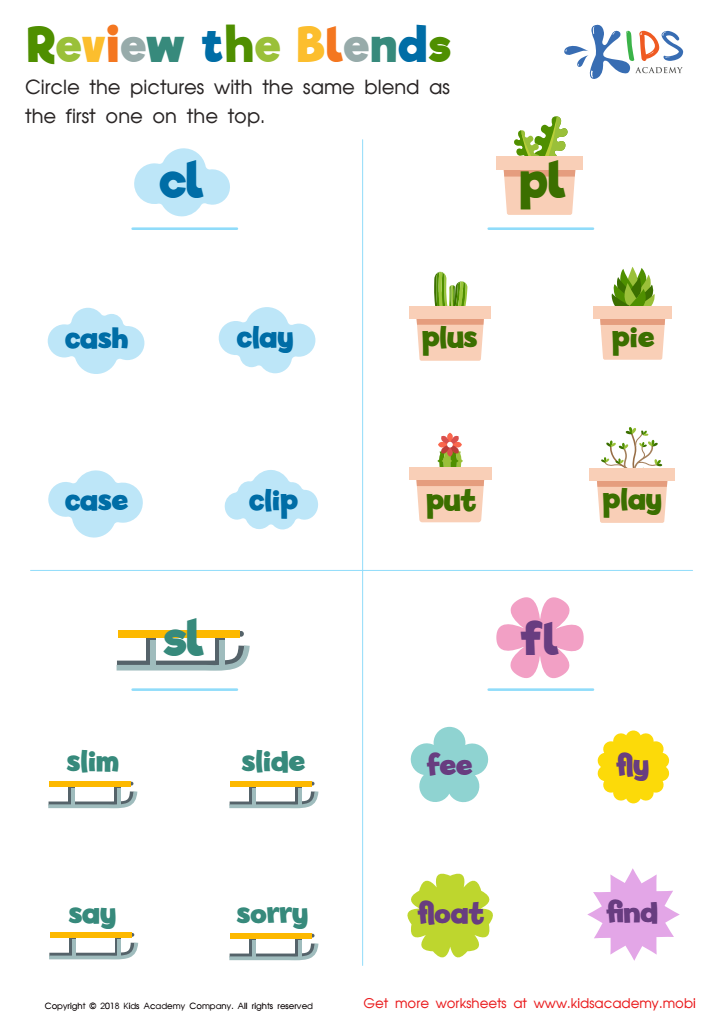

Review the Blends Worksheet
Consonant Digraphs worksheets are an invaluable resource for children ages 6-7, laying the foundation for literacy success in these critical developmental years. At this stage, children are expanding their reading and writing skills, moving beyond basic letter sounds to more complex phonetic patterns. Consonant Digraphs, pairs of consonants that together produce a single sound, are key components of the English language, found in countless words that kids encounter daily.
For Ages 6-7, these worksheets offer a tailored approach to learning, introducing Consonant Digraphs in a fun, engaging manner. Through various activities, such as matching games, fill-in-the-blanks, and word hunts, children can practice and reinforce their understanding of these crucial sound combinations. This hands-on practice is essential for mastering the reading and spelling of words with Consonant Digraphs, enabling children to become more fluent readers and confident writers.
Moreover, Consonant Digraphs worksheets are designed to boost phonemic awareness, a vital skill in early literacy. They help young learners to distinguish between different sounds in words, a critical step towards successful reading comprehension and expressive language skills. By incorporating these worksheets into their learning routine, children aged 6-7 are better prepared for the complexities of English phonetics, setting them on a path to literacy proficiency and a lifelong love of reading.
 Assign to the classroom
Assign to the classroom


